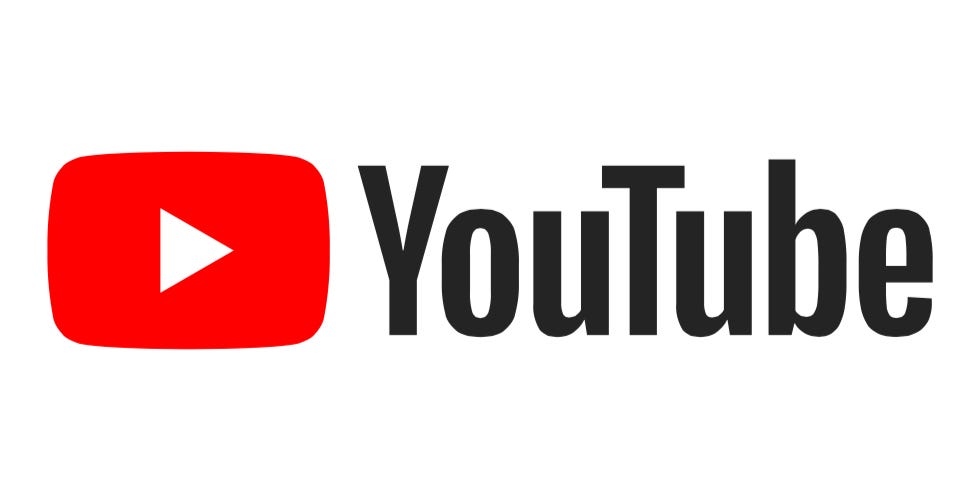TSEAMCET 2022 Expected Syllabus
30% Deleted Syllabus is given below in RED Colour
- PDF Download link is given at Bottom of this post
BOTANY
1) DIVERSITY IN THE LIVING WORLD:
The living world: What is living? Diversity in the living world;
Taxonomic categories and
taxonomical aids.
Biological Classification: Five kingdom classification - Monera,
Protista, Fungi, Plantae and Animalia, Three domains of life (six kingdom
classification), Viruses, Viroids, Prions & Lichens.
Science of plants – Botany: Origin, Development, Scope of Botany and
Branches of Botany.
Plant Kingdom: Salient features, classification and alternation of
generations of the plants of the following groups - Algae, Bryophytes,
Pteridophytes, Gymnosperms and Angiosperms.
2) STRUCTURAL ORGANISATION IN PLANTS- MORPHOLOGY:
Morphology of flowering Plants Vegetative: Parts of a typical
Angiospermic plant; Vegetative morphology and modificationsRoot, Stem and Leaf-
types; Venation, Phyllotaxy.
Reproductive: Inflorescence - Racemose, Cymose and special types (in
brief).
3) REPRODUCTION IN PLANTS:
Modes of Reproduction: Asexual reproduction, binary fission,
Sporulation, budding,
fragmentation, vegetative propagation in plants, Sexual reproduction,
Overview of
angiosperm life cycle.
Sexual Reproduction in Flowering Plants: Stamen, microsporangium, pollen
grain. Pistil,
megasporangium (ovule) and embryo sac; Development of male and female
gametophytes.
Pollination - Types, agents, Out breeding devices and Pollen - Pistil
interaction. Double
Fertilization; Post fertilisation events: Development of endosperm and
embryo; development of seed, Structure
of Dicotyledonous and Monocotyledonous seeds, Significance of fruit and seed.
Special modes - Apomixis, parthenocarpy, polyembryony.
4) PLANT SYSTEMATICS:
Taxonomy of angiosperms: Introduction. Types of Systems of
classification (in brief). SemiTechnical description of a typical flowering
plant. Description of Families: Fabaceae, Solanaceae and Liliaceae.
5) CELL STRUCTURE AND FUNCTION:
Cell - The Unit of Life: Cell- Cell theory and cell as the basic unit of
life- overview of the cell.
Prokaryotic and Eukoryotic cells, Ultra Structure of Plant cell
(structure in detail and functions in brief), Cell membrane, Cell wall, Cell
organelles: Endoplasmic reticulum, Mitochondria, Plastids, Ribosomes, Golgi
bodies, Vacuoles, Lysosomes, Microbodies, Centrosome and Centriole, Cilia,
Flagella, Cytoskeleton and Nucleus. Chromosomes: Number, structural
organization; Nucleosome.
Biomolecules: Structure and function of Proteins, Carbohydrates, Lipids
and Nucleic acids.
Cell cycle and Cell Division: Cell cycle, Mitosis, Meiosis -
significance.
6) INTERNAL ORGANISATION OF PLANTS:
Histology and Anatomy of Flowering Plants: Tissues - Types, structure
and functions:
Meristematic; Permanent tissues - Simple and Complex tissues. Tissue
systems - Types,
structure and function: Epidermal, Ground and Vascular tissue systems.
Anatomy of
Dicotyledonous and Monocotyledonous plants - Root, Stem and Leaf.
Secondary growth in
Dicot stem and Dicot root.
7) PLANT ECOLOGY:
Ecological Adaptations, Succession and Ecological Services:
Introduction. Plant
communities and Ecological adaptations: Hydrophytes, Mesophytes and
Xerophytes. Plant
succession. Ecological services - Carbon fixation, Oxygen release and
pollination.
8) PLANT PHYSIOLOGY:
Enzymes: Chemical Reactions, Enzymatic Conversions, Nature of Enzyme
Action, Factors Affecting Enzyme Activity, Temperature and pH, Concentration of
Substrate, Classification and Nomenclature of Enzymes, Co-factors.
Photosynthesis in Higher Plants: Early Experiments, Site of
Photosynthesis, Pigments
involved in Photosynthesis, Light Reaction, The Electron
Transport-Splitting of Water,
Cyclic and Noncyclic Photo-phosphorylation, Chemiosmotic Hypothesis,
Biosynthetic phaseThe Primary Acceptor of CO2, The Calvin Cycle, The C4
Pathway, Photorespiration, Factors affecting
Photosynthesis.
Respiration of Plants: Glycolysis, Fermentation, Aerobic Respiration -
Tricarboxylic Acid
Cycle, Electron Transport System (ETS) and Oxidative Phosphorylation,
The Respiratory
Balance Sheet, Amphibolic Pathway, Respiratory Quotient.
Plant Growth and Development:
Plant Growth Regulators- Characteristics, Discovery, Physiological
effects of Plant
9) GENETICS:
Principles of Inheritance and Variation: Mendel’s Experiments,
Inheritance of one
gene (Monohybrid Cross)-Back cross and Test cross, Law of Dominance, Law
of
Segregation or Law of purity of gametes, Deviations from Mendelian
concept of dominance
- Incomplete Dominance, Co-dominance, Explanation of the concept of
dominance,
Inheritance of two genes- (Dihybrid Cross) Law of Independent
Assortment, Chromosomal
Theory of Inheritance, Linkage and Recombination, Mutations,
Significance of mutations.
10) MOLECULAR BIOLOGY:
Molecular Basis of inheritance: The DNA- Structure of Polynucleotide
Chain, Packaging of DNA Helix, The
Search for Genetic Material, Transforming Principle, Biochemical
Characterisation of Transforming Principle, The Genetic Material is DNA,
Properties of
Genetic Material (DNA versus RNA), RNA World, Replication - The
Experimental Proof,
The Machinery and the Enzymes, Transcription-Transcription Unit,
Transcription Unit and the Gene, Types
of RNA and the process of Transcription, Genetic Code-Mutations and Genetic Code,
tRNA- the Adapter Molecule, Translation, Regulation of Gene Expression-The Lac
operon.
11) Biotechnology:
Principles and processes of Biotechnology: Principles of
Biotechnology-Construction
of the first artificial recombinant DNA molecule, Tools of Recombinant
DNA TechnologyRestriction Enzymes, Cloning Vectors, Competent Host (For
Transformation with Recombinant DNA),
Processes of Recombinant DNA Technology- Isolation of the Genetic Material (DNA), Cutting of DNA at Specific
Locations, Separation and isolation of DNA fragments, Insertion of isolated
gene into a suitable vector, Amplification of Gene of Interest using PCR,
Insertion of Recombinant DNA into the Host, Cell/Organism, Selection of
Transformed host cells, Obtaining the Foreign Gene Product, Downstream
Processing.
Biotechnology and its applications: Biotechnological Applications in
Agriculture-Bt
Cotton, Pest Resistant Plants, Other applications of Biotechnology -
Insulin, Gene therapy,
Molecular Diagnosis, ELISA, DNA fingerprinting, Transgenic plants,
Bio-safety and Ethical issues- Biopiracy.
12) MICROBES AND HUMAN WELFARE:
Microbes in Human Welfare: Microbes in Household Products, Microbes in
Industrial
Products-Fermented Beverages, Antibiotics, Chemicals, Enzymes and other
Bioactive
Molecules, Microbes in Sewage Treatment, Primary treatment, Secondary
treatment or
Biological treatment, Microbes in Production of Biogas, Microbes as
Biocontrol Agents,
Biological control of pests and diseases, Microbes as Biofertilisers,
Challenges posed by
Microbes.
1st Year Deleted
Syllabus
UNITS CHAPTER NO DELETED TOPIC
|
I |
1 |
|
The living
world |
|
|
|
|
1.3 |
Taxonomic categories |
|
|
|
|
1.4 |
Taxonomic aids |
|
|
|
4 |
|
Plant kingdom |
|
|
|
|
4.5 |
Angiosperms |
|
|
II |
5 |
|
Morphology of flowering plants |
|
|
|
|
5.1 |
The Root |
|
|
|
|
5.2 |
The Stem |
|
|
|
|
5.3 |
The Leaf |
|
|
|
|
5.6 |
The Fruit |
|
|
|
|
5.7 |
The Seed |
|
|
III |
6 |
|
Modes of reproduction |
|
|
|
|
6.1 |
Reproduction &
its types |
|
|
|
|
6.2 |
Asexual reproduction |
|
|
|
|
6.3 |
Sexual reproduction |
|
|
IV |
8 |
Plant systematics |
||
|
|
8.3.1 |
Fabaceae |
||
|
VI |
|
Internal organisation of plants |
||
|
|
12 |
Histology and anatomy of flowering plants |
||
|
|
12.1 |
The tissues |
||
|
|
12.2 |
The tissues systems |
||
|
|
12.3 |
Anatomy |
||
|
|
12.3.5 |
Dorsiventral leaf |
||
|
|
12.3.6 |
Isobilateral leaf |
||
|
|
12.4 |
Secondary growth |
||
|
VII |
13 |
Ecological adaptation, Succession & Ecological services |
||
|
|
13.3 |
Plant succession |
||
|
|
13.4 |
Ecological services |
||
2nd Year Deleted Syllabus
Unit
I - PLANT PHYSIOLOGY
Chapter
1: Transport in Plants
Chapter
2: Mineral Nutrition
Chapter
6: Plant Growth and Development
6.1
Growth
6.2
Differentiation, Dedifferentiation and Redifferentiation
6.3
Development
6.5
Seed Dormancy
6.6
Photoperiodism
6.7
Vernalisation
Unit
II - MICROBIOLOGY
Chapter
7: Bacteria
Chapter
8: Viruses
Unit
VI- PLANTS, MICROBES AND HUMAN WELFARE
Chapter
13: Strategies for enhancement in Food production
























